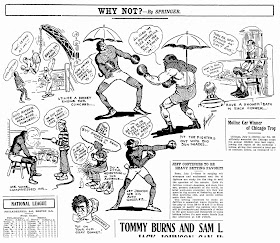HOWEVER, it is now possible to expand on Douglas Edmund’s story, thanks largely to online genealogy records and digitized newspapers, although gaps still remain. If any reader can add to what follows, then please do so!
Douglas Edmund Jerrold was born in London on 18 July 1828 and baptized in the parish of St. George, Bloomsbury, on 21 September 1828. He was educated, partly at least, at a school in Boulogne, a place his father often visited. When he came of age, his father, as mentioned above, tried to launch him on a career, pointing out in a letter to his friend, the biographer and critic John Forster, that Edmund was “healthy, strong and active; and rather of the stuff for the bush than the clerk’s desk. His only wish is to be set on his feet somewhere abroad, and his expectation of official advantage very limited. I can vouch for his probity and steadiness of conduct.” (Quoted in
Douglas Jerrold: Dramatist and Wit.)
It took around eight months, between May 1850 and January 1851, before a post could be found for him in the Commissariat Department (responsible for the provision of supplies for the army) at the Treasury, which he took up in January 1851.
At the time of the 1851 census (the entire family appears to be absent from the 1841 census, possibly away in France) he was living with parents at West Lodge, Putney, having begun his job as a clerk in the Treasury. On 27 March 1853 he married Caroline Stretton, the daughter of Charles Stretton (deceased) at St. Margaret’s, Westminster — he was living in Circus Road, Marylebone, at the time.
 |
| [2] 27 March 1853 |
Rather strangely, Walter Copeland Jerrold claimed in his biography of his father that Edmund was given a post in the Commissariat in Canada in 1852. He quoted the journalist George Hodder who attended a farewell ball for Edmund shortly before his departure:
Nevertheless, Edmund was still in London in 1853, as evidenced by his marriage, and he did not acquire a passport until 13 August 1854. He then, however, moved to Canada more or less immediately — on 4 October 1854 he launched what appears to have been a very short-lived periodical,
Douglas E. Jerrold’s Newsbag (the Toronto Public Library has only the first number
HERE). Whether or not his wife moved to Canada with him is not known. Some American newspapers were later to report that he had worked for the British Commissariat for five years, but this seems to be incorrect — Gaines Kincaide stated in his
Notes and Queries piece that the Canadian archives had no record of Edmund taking up his post.
In fact, Edmund may have returned to England very soon after arriving in Canada — Michael Slater states that he joined his father on
Lloyd’s Weekly Newspaper in 1855, although he had turned down the role of Paris correspondent.
 |
| [3] Frank Leslie’s Illustrated Newspaper, 19 April 1856 |
However, if he did return to England it was only for a brief period — two years later he was in America, working as an artist — one of his sketches was published in
Frank Leslie’s Illustrated Newspaper on 19 April 1856. In 1857 he found himself stranded in Zanesville, Ohio, where he was able to obtain a commission to produce a copy of a Landseer painting from Joseph Crosby, an English grocer, which enabled him to pay his debts and move on. (
The Times Recorder, Zanesville, Ohio, 1 January, 1928).
 |
| [4] Zanesville, Ohio, 1857 |
Within a short while he had built up a reputation as an artist, and several newspapers carried a brief report in April 1860 that he was visiting Charleston, Carolina, where he had “placed his drawings on public display.”
PRIVATE. His career then took an unexpected turn when, on 8 August 1862, he enlisted as a Private in the New York 8th Heavy Artillery Company. He was promoted to Corporal on 3 October 1862, and to 1st Lieutenant on 17 September 1863. He left the regiment the same day, and immediately joined the 3rd Regiment of the Maryland Cavalry, with whom he fought, as a Unionist, in the Civil War until he was discharged on 10 August 1864.
 |
| [5] Enlistment, 1862 |
He subsequently moved to Louisiana, where he married Alice V. Carradine (born in Mississippi in 1946) on 7 July 1865 in St. Tammany, which is where they settled for several years. At the time of the 1870 census, they were living in the 9th Ward in St. Tammany, with Douglas not having an occupation, and having had two children: Douglas, aged 3, and Georgiana, aged 1.
BIZARRE. In 1872 he launched a comic illustrated paper,
Bizarre, in New Orleans (
Chicago Daily Tribune, 21 July 1872, p.4), although how long this survived is not known, no copies appear to have survived.
In February 1874 he was in Austin, Texas (as stated by Gaines Kincaide), where he produced a series of drawings illustrating the contest between the Republicans and Democrats, published in
Frank Leslie’s Illustrated Newspaper.
 |
| [6] Austin, Texas — Sketched by Douglas E. Jerrold, Frank Leslie’s Illustrated Newspaper, 21 Feb 1874 |
His last appearance in the American press appears to have been in the summer of 1878, when several newspapers reported that he was “ill at Greenville, Mississippi, and his wife and three children are in so destitute circumstances that he has appealed to the public for help.”
 |
| [7] Illness, 1878 |
NED. What became of him, and his family, after this is a mystery. One clue may lie in the marriage index for Louisiana, in that a Ned Jerrold married a Sallie Polk in West Feliciana on 12 December 1887 — Douglas Edmund was widely-known as “Ned”…

























